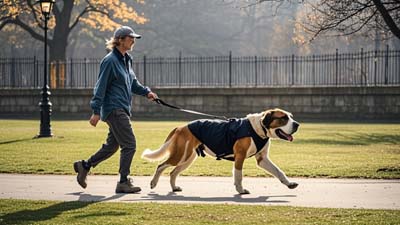My Chinese class is never dull! My students always keep me on my toes and laughing with their funny mistakes and their funny ways of learning.
One of my favorite “Daily Mandarin” classes was when one of my students was practicing conversational Chinese. He wanted to say a normal, everyday sentence, which was:
“Mom went to walk the dog.”
In Chinese the correct way to say this would have been:
“妈妈去遛狗了 (Māma qù liùgǒu le).”
BUT he mixed up the words! He got “遛狗 (liùgǒu)” and “走狗 (zǒugǒu)” switched around and instead said:
“妈妈去走狗了(Māma qù zǒugǒu le).”
In Chinese, “走 (zǒu)” means “to walk.” “狗 (gǒu)” means “dog.” Many of my students will put those characters side by side and think they are saying the correct thing. Not true! In fact, when you put those characters next to one another you get an entirely different meaning:
“走狗 (zǒugǒu)” means lackey, hired thug.

So just imagine my surprise when I heard my student actually say:
Not going to lie, I had a hard time containing my laughter.
走狗 (zǒuɡǒu):
走 (zǒu): v. go; walk.
狗 (ɡǒu): n. dog.
走狗 (zǒugǒu) n. originally means hound, a running dog. Later, it’s used to refer to a hired thug; or a person who is hired to harm other people. It appears more in the actor’ lines of ancient dramas. This word has a strong negative meaning in Chinese. Similar to a bad word. So pay attention to it and don’t use it unless you really really mean it!
Nǐ zěnme huì yuànyì zuò tā de zǒugǒu?
你 怎么 会 愿意 做 他 的 走狗?
How could you be willing to be his hired thug?
So, what would have been the correct way to say this sentence? If you want to say “walk a dog” in Chinese, you should actually use this character combination:
遛狗 (liùgǒu): v. walk the dog.
遛 (liù): v. walk by leading a domestic animal; to stroll.

Subject + 遛狗+去(了).
Subject + 去 + 遛狗(了).
Note: The particle “了 (le)” is to express the completion of an action which goes directly after the verb.
Wǒmen liùgǒu qù.
我们 遛狗 去。
Let’s take the dog for a walk.
Tom chūqù liùgǒu qù le.
Tom 出去 遛狗 去 了。
Tom was out walking the dog.
Jīntiān lún dào nǐ qù liùgǒu.
今天 轮 到 你 去 遛狗。
It’s your turn to take the dog for a walk today.
As we talked in the previous blog The 3 Most Common Mistakes by Chinese Language Students, you can’t always use a literal word-by-word translation when you speak in Chinese. It’s very important to learn how to speak Chinese in the right way! So next time when you want to talk about walking the dog, you can use the correct word!

1. Which of the following Chinese phrase can be used to describe “walk the dog”?
A. 走狗 (zǒugǒu)
B. 遛狗 (liùgǒu)
C. 训狗 (xùngǒu)
2. Put the right word in the sentence “饭做好_____吗?(Fàn zuò hǎo__ ma?).”
A. 的 (de)
B. 了 (le)
C. 吃 (chī)
Chinese Popular Words
HSK Test
General Chinese (Beginner Level)
General Chinese (Intermediate Level)



